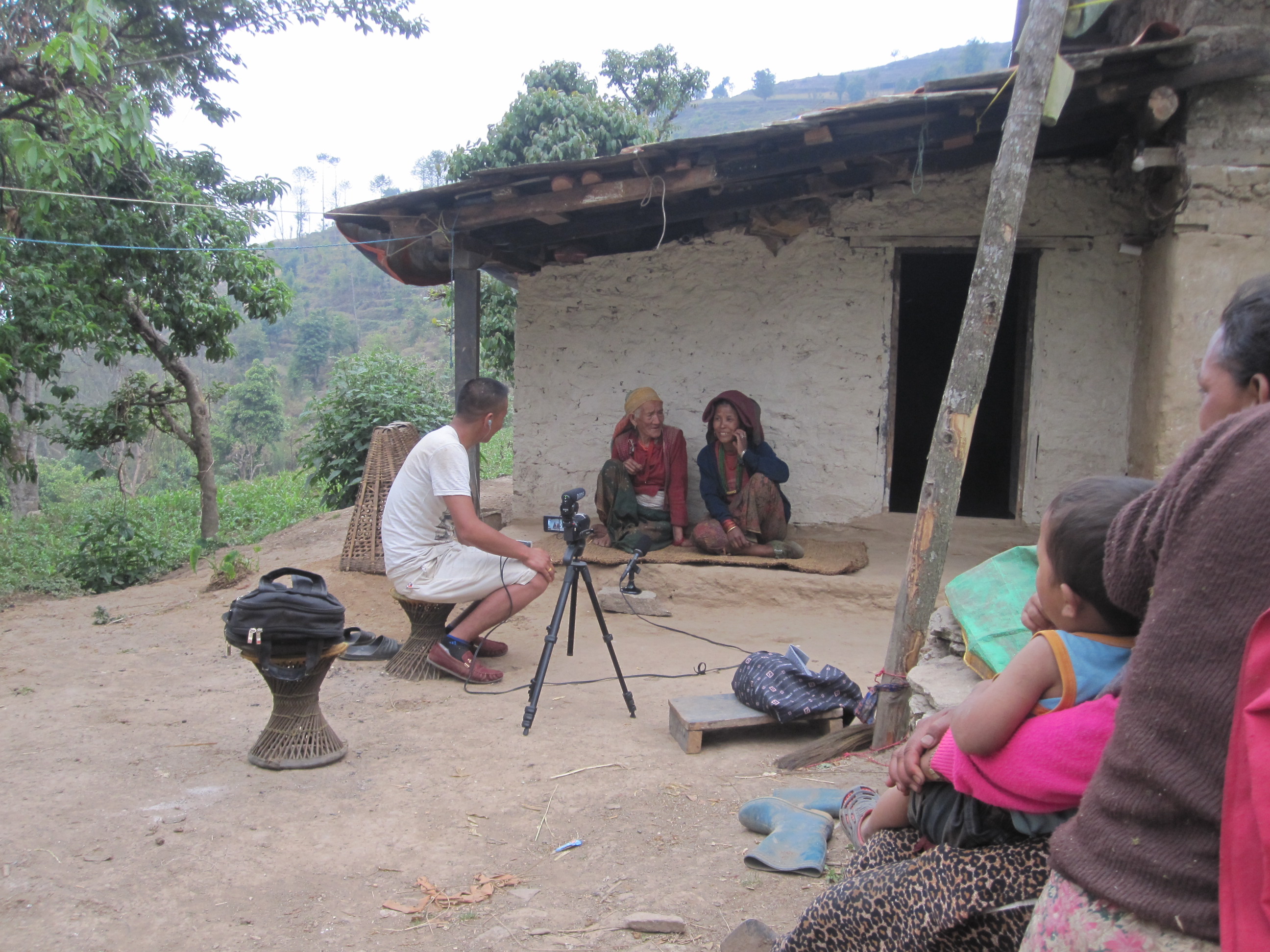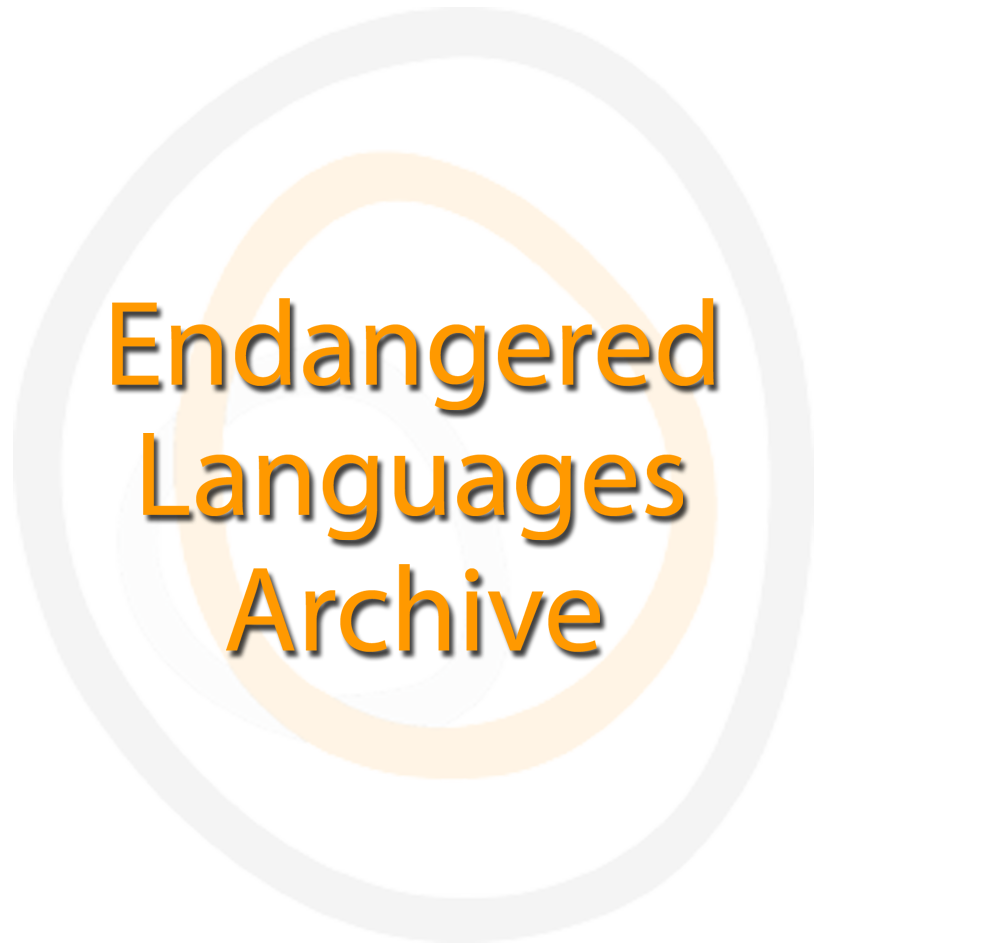Kagate (Syuba), an endangered Tibeto-Burman language of Nepal

Landing page image for the collection “Documenting and describing Kagate, an endangered Tibeto-Burman language of Nepal”. Click on image to access collection.
| Language | Kagate (ISO639-3:syw), Yolmo (ISO639-3:scp) |
| Depositor | Lauren Gawne |
| Affiliation | NTU |
| Location | Nepal |
| Collection ID | 0388 |
| Grant ID | IPF0218 |
| Funding Body | ELDP |
| Collection Status | Collection online |
| Landing Page Handle | http://hdl.handle.net/2196/f05cc077-2c74-4f69-89c6-a188a8acca50 |
Showreels
Summary of the collection
This collection includes audio-video recordings of Syuba, spoken in the Ramechhap district of Nepal. It also contains a smaller collection of audio-video recordings of Ilam Yolmo, a mutually intelligible variety spoken in a different district of Nepal. These collections have been archived together because of their similarities and because they were recorded as part of the same research project. Many of the recordings are monologues, interviews or conversations. ELAN transcriptions are available for a subset of the collection, and will continue to be added as work on the collection progresses. There are also some experimental and elicited data, as well as supplementary materials including scanned notes, FLEx files, GPS data and publications about the language. This project is still in active development until June 2017.This collection includes audio-video recordings of Syuba, spoken in the Ramechhap district of Nepal. It also contains a smaller collection of audio-video recordings of Ilam Yolmo, a mutually intelligible variety spoken in a different district of Nepal. These collections have been archived together because of their similarities and because they were recorded as part of the same research project. Many of the recordings are monologues, interviews or conversations. ELAN transcriptions are available for a subset of the collection, and will continue to be added as work on the collection progresses. There are also some experimental and elicited data, as well as supplementary materials including scanned notes, FLEx files, GPS data and publications about the language. This project is still in active development until June 2017.
Group represented
Syuba speakers in Ramechhap and Yolmo speakers in Ilam
Language information
The language is listed in the ISO codes as Kagate, but speakers in Ramechhap are increasingly using the name Syuba (Kagate is a Nepal word, while Syuba is the same name in their own language). The Yolmo variety spoken in Ilam is very similar to Syuba in Ramechhap, but the speaker have a history of referring to themselves and their language as Yolmo, which means it is categorised under a different ISO code.
Special characteristics
This deposit is a multi-dialect deposit. Please check whether you are using a recording from Syuba from Ramechhap or Yolmo from Ilam.
Archived collections from related languages:
http://catalog.paradisec.org.au/collections/LG1
This is a collection of recordings in the Lamjung variety of Yolmo, which is closely related to the varieties. A number of stimuli experiments have been run with both groups, and earthquake narratives were also collected with Lamjung Yolmo speakers – which provide useful comparative data across the two collections.
http://catalog.paradisec.org.au/collections/AH1
This is a historical collection of Yolmo spoken in the Melamchi area. Twenty cassettes from Anne Marie Hari’s fieldwork in the 1970s and 1980s have been digitised and made publicly accessible.
Collection contents
The majority of bundles in this collection are audio-video recordings. There are 8 and a half hours of narrative, conversations and interviews which can be broken down further by genre:
- 3 hours of data about the 2015 earthquakes in Nepal
- 2 hours of personal narratives other than earthquake
- 2 hours of historical narrative
- 1.5 hours of fiction narrative and two
There are also:
- 1 hour of descriptive texts
- 1.5 hours of song
- 3 hours of conversation
- 1.5 hours of stimuli tasks
- 7 hours of elicitation, which mostly covers tone, evidentiality and verb use
- 1 hour of video of people performing culturally important activities
There are also over 4.5 hours of recordings of people giving their consent for their recordings to be shared. While this is almost entirely in Nepali, and not Syuba, it contains a wealth of ethnographic information.
Approximately 3 hours of this data are in Ilam Yolmo, and the remainder are in Syuba. As of June 2016 there are interlinearised and translated ELAN transcriptions for 2 hours of Syuba data, and another 1 hours of transcriptions with Nepali translations. ELAN transcriptions and interlinearisations will continue to be added as they are processed.
Collection history
This collection is also archived at Paradisec: http://catalog.paradisec.org.au/collections/SUY1
Acknowledgement and citation
Funding for the creation of this collection came from ELDP, Firebird Foundation, NTU’s Centre for Liberal Arts and Social Sciences, The University of Melbourne, Stack Exchange and The Awesome Foundation (Ottawa).
To refer to any data from the collection, please cite as follows:
Gawne, Lauren. 2016. Kagate (Syuba), an endangered Tibeto-Burman language of Nepal. Endangered Languages Archive. Handle: http://hdl.handle.net/2196/00-0000-0000-000E-D15A-E. Accessed on [insert date here].


